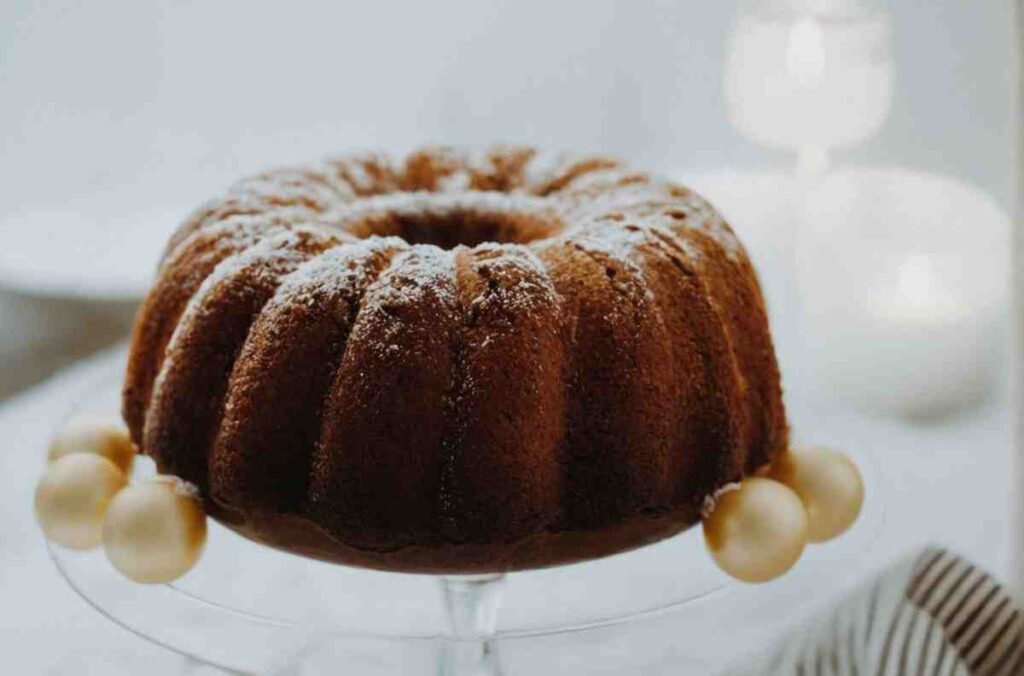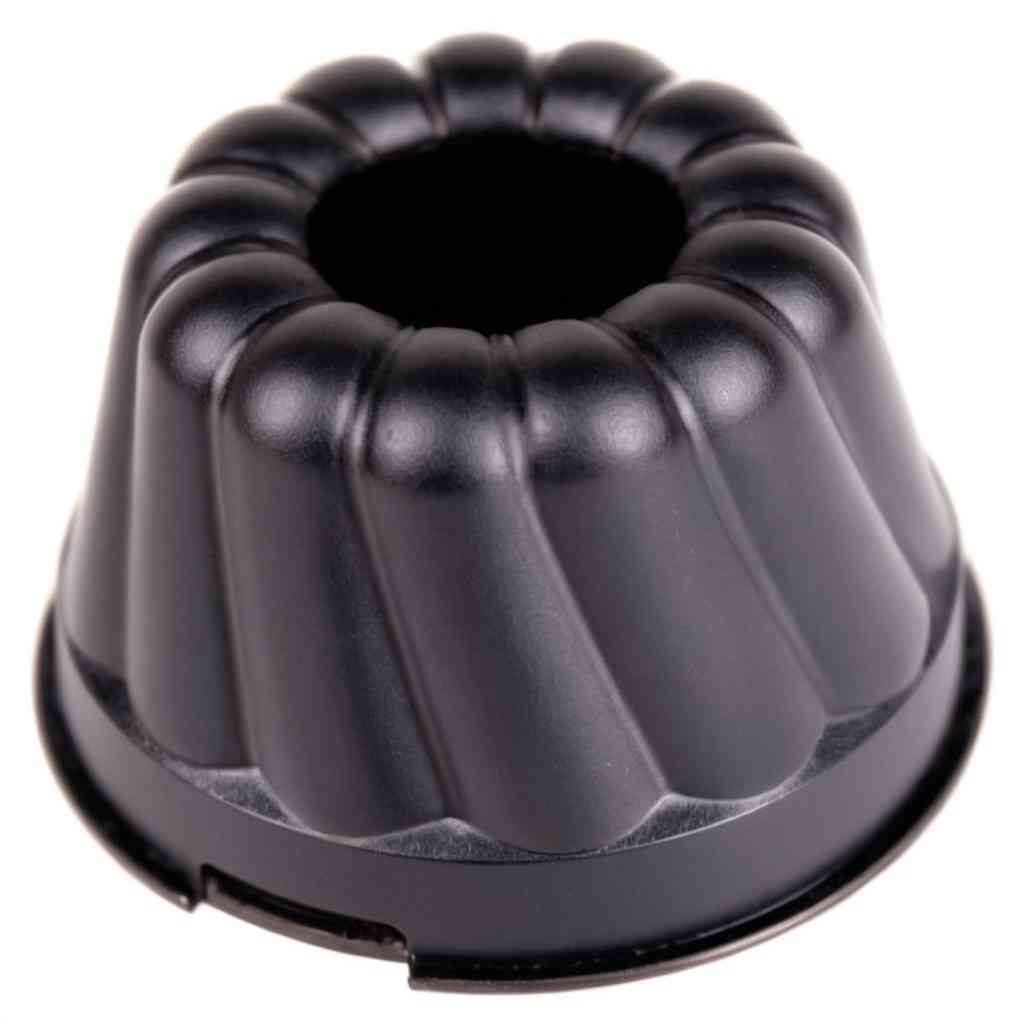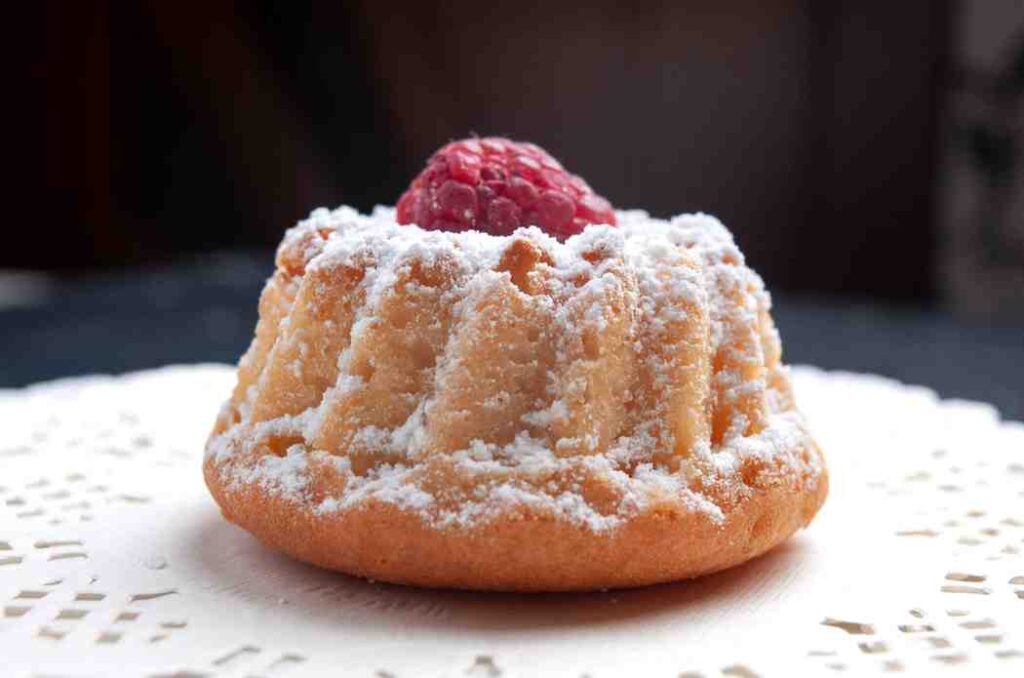Kugelhopf, also known as Gugelhupf, is a traditional yeasted cake that has delighted generations across Europe. With its light, airy texture and subtle sweetness, it’s enjoyed by many during breakfast, afternoon tea, or festive occasions. Originating in the heart of Europe, this cake holds a special place in the culinary traditions of Austria, France, Germany, and Switzerland.
Let’s explore the origins of Kugelhopf, its cultural significance, and what makes this unique cake so special. Along the way, you’ll also learn how to create the perfect Kugelhopf at home, step by step.
The Origins of Kugelhopf
A Cake with Many Legends
Kugelhopf’s origins are deeply rooted in European history, with several countries laying claim to its creation. Austria, France (specifically the Alsace region), and Germany all tell stories about how this cake came to be.
Here are some of the most popular legends:
- Austrian Victory: Some believe Kugelhopf was first baked to celebrate Austria’s victory over the Ottoman Turks. The cake’s shape, reminiscent of a turban, symbolizes the defeated sultan’s headgear.
- Marie Antoinette’s Influence: Another tale suggests that Marie Antoinette brought Kugelhopf from Austria to France when she married King Louis XVI, popularizing it in the French court.
- Old German Cookbook: The oldest known recipe for Kugelhopf dates back to 1581, found in a German cookbook called Ein new Kochbuch by Marx Rumpolt. This recipe refers to the cake as “hat cake,” which reflects its distinctive shape.
Despite the differing stories, one thing is certain: Kugelhopf has been enjoyed for centuries, and its popularity has only grown across Europe.
Cultural Significance of Kugelhopf
Kugelhopf isn’t just a cake—it’s a part of European culture. It’s traditionally served:
- During festive occasions, such as Christmas and Easter.
- As a breakfast cake or mid-morning snack in regions like Alsace.
- With coffee or tea, rather than as a post-dinner dessert.
Kugelhopf’s slightly sweet flavor and fluffy texture make it perfect for pairing with hot beverages, adding to its appeal as a comforting treat.
What Makes Kugelhopf Special?
Unique Ingredients and Flavor Profile
Unlike most cakes, which rely on baking powder or soda, Kugelhopf is a yeasted cake. This gives it a light, airy texture that sets it apart from richer, denser cakes like Bundt cake. The yeast works with the other ingredients to create a spongy crumb that’s tender and flavorful.

Kugelhopf vs. Bundt Cake: Key Differences
Though Kugelhopf and Bundt cakes may look similar due to their circular molds with a central hole, they differ in key ways:
- Leavening agent: Kugelhopf uses yeast, while Bundt cakes typically rely on baking powder or soda.
- Sweetness: Kugelhopf is less sweet, making it more suitable for pairing with coffee or tea.
- Texture: The yeasted dough gives Kugelhopf a light, airy texture, while Bundt cakes are denser.
Kugelhopf Mould: Antique and New
The Kugelhopf mould has its roots in Central Europe, particularly in Austria, Germany, and the Alsace region of France. Antique moulds, often made from ceramic, copper, or cast iron, were crafted with intricate designs and are highly collectible today. Modern versions, made from silicone or non-stick metals, provide more convenience for bakers while preserving the traditional fluted shape that makes the Kugelhopf so distinctive.

Key Features of Antique and Modern Kugelhopf Moulds:
- Antique Kugelhopf Moulds:
- Made from ceramic, copper, or cast iron.
- Often hand-crafted with ornate patterns and designs.
- Originated in Central Europe (Austria, Germany, Alsace).
- Modern Kugelhopf Moulds:
- Made from silicone or non-stick metal.
- Easier to use with non-stick and lightweight properties.
- Maintain the classic fluted shape for even baking.
Essential Ingredients for Traditional Kugelhopf
To create the perfect Kugelhopf, you need a handful of key ingredients that contribute to its unique texture and flavor. Here’s what you’ll need:
Key Ingredients:
- Yeast:
Yeast is the heart of the Kugelhopf recipe. It’s responsible for the cake’s rise, creating its signature airy and spongy texture. For the best results, use active dry yeast. - Butter:
Butter adds richness and flavor to the dough, giving it a tender crumb. Make sure your butter is softened to room temperature before using. - Heavy Cream:
Heavy cream provides moisture and richness to the dough, making it soft and flavorful. You can substitute with whole milk if necessary, but cream is preferred for the best texture. - Egg Yolks:
Egg yolks help create a rich and moist cake, contributing to its tender crumb. Using yolks rather than whole eggs gives the dough a luxurious texture. - Raisins (soaked in rum):
Raisins, especially when soaked in rum, add bursts of sweetness throughout the cake. The rum not only enhances the flavor but also softens the raisins, preventing them from becoming dry during baking. - Almonds:
Almonds are used both inside the cake and to decorate the mold. Their nutty flavor and crunchy texture add a delightful contrast to the soft, airy dough. - Lemon Zest:
Lemon zest brightens the flavor, adding a subtle citrus note that balances the richness of the butter and cream.

Step-by-Step Instructions for Baking Kugelhopf
Once you’ve gathered your ingredients, it’s time to start baking. Follow these instructions carefully to ensure a perfect result.
1. Prepare the Yeast Mixture
- Combine yeast with lukewarm cream:
In a small bowl, stir together active dry yeast with warm cream (not too hot, about 110°F) and one tablespoon of sugar. Allow the mixture to sit for 10-15 minutes, until it becomes frothy. This step is crucial for ensuring the yeast is active and ready to work. - Why it’s important:
Yeast needs to be properly activated to give the cake its rise and airy texture. If the mixture doesn’t become frothy, your yeast might be expired or inactive, and you’ll need to start over with fresh yeast.
2. Mix the Dough
- Cream the butter, sugar, and lemon zest:
In a large mixing bowl, cream together the softened butter, sugar, and lemon zest. This step creates the base for a flavorful dough. - Add egg yolks:
Slowly add the egg yolks one at a time, mixing until fully incorporated. This helps bind the dough and adds richness. - Incorporate the yeast mixture and flour:
Gradually add the frothy yeast mixture and flour to the butter and egg mixture. Use a dough hook attachment if you’re using a stand mixer, or knead by hand. Continue mixing until the dough comes together into a soft, smooth ball. - Kneading tips:
If the dough is too sticky, add a bit more flour. If it’s too dry, incorporate a little more cream or egg yolk.
3. First Rise
- Let the dough rise:
Transfer the dough to a greased bowl, cover it with plastic wrap or a kitchen towel, and place it in a warm, draft-free location. Allow the dough to rise for about 2 hours, or until it has doubled in size. - Why it matters:
The first rise is crucial for developing the airy, soft texture of Kugelhopf. Be patient—rushing this process will result in a denser cake.
4. Shape the Dough
Once the dough has completed its first rise, it’s time to shape it and prepare it for the mold.
- Roll out the dough:
Turn the dough out onto a clean, lightly floured surface. Roll it into a rectangular shape, about 1/4-inch thick. - Add raisins and almonds:
Evenly sprinkle the rum-soaked raisins and slivered almonds across the dough. - Roll and form:
Starting from the long side, carefully roll the dough up like a jelly roll. Then, bring the ends of the roll together to form a ring. Make sure the seam is well sealed to avoid the dough unraveling during baking.
5. Second Rise in the Mold
- Prepare the mold:
Generously butter the Kugelhopf mold, ensuring that every crease is coated to prevent sticking. Place whole blanched almonds at the bottom of the mold for decoration. - Transfer the dough:
Gently place the ring of dough into the prepared mold, pressing it down lightly so that it spreads evenly. - Second rise:
Cover the mold loosely with plastic wrap and let the dough rise again for about an hour, or until it has risen just above the top of the mold. - Why the second rise is important:
This second rise helps develop the final texture of the cake, ensuring it is light and airy with a well-formed crumb.
6. Bake the Kugelhopf
Now, it’s time to bake!
- Preheat the oven:
While the dough is rising, preheat your oven to 350°F (175°C). - Bake the cake:
Once the dough has risen in the mold, place it in the oven and bake for 30-40 minutes. The top should be golden brown, and a toothpick inserted into the center should come out clean. - Baking tip:
If the top of the cake browns too quickly, you can tent it with aluminum foil to prevent over-browning while the inside continues to cook.
7. Cool and Serve
- Cool the cake:
Once the Kugelhopf is done baking, remove it from the oven and let it sit in the mold for about 10 minutes. Then, carefully invert the mold onto a wire rack and allow the cake to cool completely. - Dust with powdered sugar:
Before serving, dust the top of the Kugelhopf with a generous amount of powdered sugar for a classic finish.

Tips for Perfecting Your Kugelhopf
- Check the yeast:
Always make sure your yeast is fresh and active. Expired or improperly stored yeast will result in a flat, dense cake. - Don’t rush the rising process:
Both the first and second rise are essential for creating a light, airy texture. Allow the dough to rise fully for the best results. - Butter the mold well:
Kugelhopf molds are intricate, so take extra care to butter every crease and curve to ensure the cake doesn’t stick when you invert it. - Storage tips:
Kugelhopf is best enjoyed the day it’s baked, but it can be stored for up to three days at room temperature. Wrap it tightly in plastic wrap to keep it fresh. You can also freeze the cake for up to three months.
Kugelhopf’s Versatility
Kugelhopf’s versatility is one of its most appealing traits. While traditionally made with raisins and almonds, you can easily adapt the recipe to suit your preferences:
1. Chocolate Kugelhopf
For chocolate lovers, this sweet variation is a rich and indulgent twist on the traditional recipe. Add chocolate chips or cocoa powder to the dough for a deep, chocolatey flavor. You can even finish it off with a drizzle of melted chocolate or a dusting of cocoa powder on top. This version is perfect for dessert or a decadent treat.
2. Savory Kugelhopf
Transform Kugelhopf into a savory delight by omitting the sweet ingredients and incorporating savory elements like crispy bacon, grated cheese, and fresh herbs. This version is popular in regions like Alsace, turning the traditionally sweet bread into a savory appetizer or side dish that pairs well with soups, stews, or as part of a charcuterie board.
3. Keto-Friendly Kugelhopf
For those following a low-carb or ketogenic diet, you can still enjoy Kugelhopf by making some simple swaps. Replace the flour with almond or coconut flour and use sugar substitutes like erythritol or stevia. Add keto-friendly ingredients such as sugar-free chocolate chips, crushed nuts, or even savory items like cheese and bacon. This version allows you to enjoy the classic flavors while keeping it low in carbs and high in flavor.
Serving Suggestions
Kugelhopf is traditionally enjoyed:
- With a cup of coffee or tea during breakfast or mid-morning.
- As part of a festive table during holidays like Christmas and Easter.
- Leftovers can be toasted and served with butter, or repurposed into French toast or bread pudding.
Storing Leftovers
If you have leftover Kugelhopf, here’s how to store it:
- Short-term: Wrap in plastic wrap and store at room temperature for up to 3 days.
- Long-term: Freeze the cake for up to 3 months. Simply thaw and toast slices as needed.

